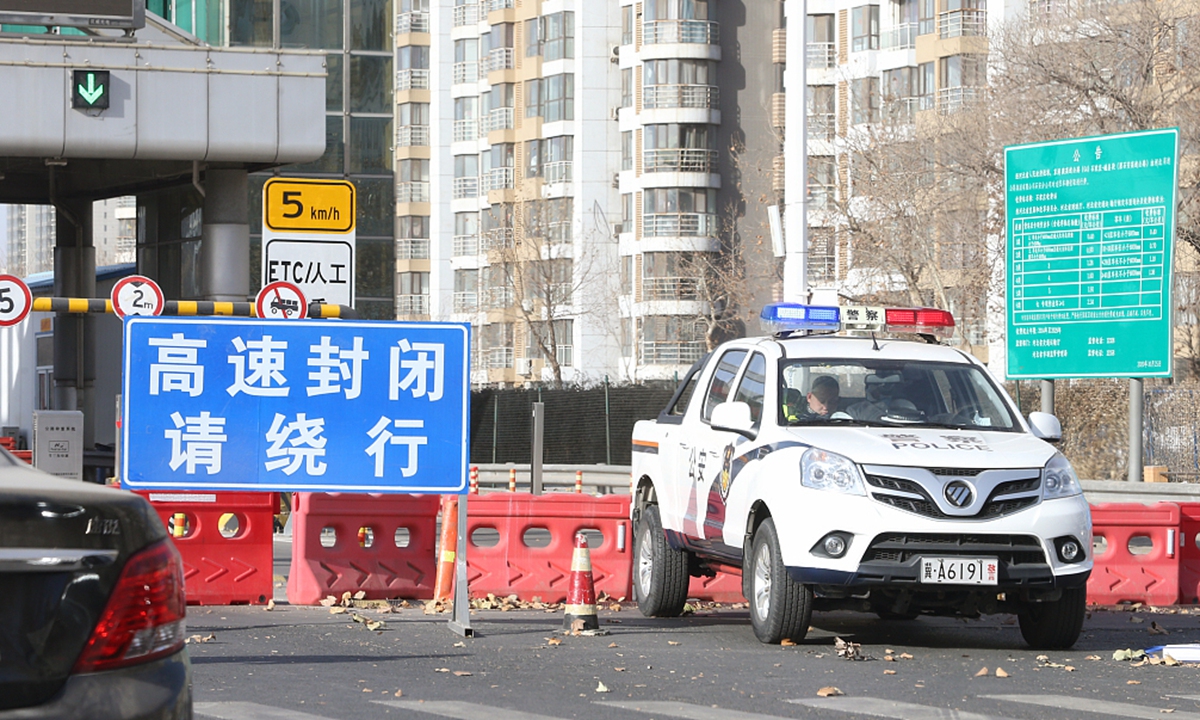
Hebei file Photo: VCG
Shijiazhuang, capital of North China's Hebei Province, has locked down outbound traffic and banned residents from leaving as the city reported a record 117 COVID-19 infections, including confirmed patients and silent carriers, on Thursday. Concerns continue to rise over a potential and graver situation as the origins of these cases have yet to be found.
Shijiazhuang reported 50 confirmed cases and 67 asymptomatic ones. Xingtai, another Hebei city whose outbreak is connected to that of Shijiazhuang, reported one new confirmed patient and two asymptomatic cases on Thursday. Total infections has surpassed 230 since the outbreak was detected on Saturday.
All people in Shijiazhuang are not allowed to leave the city, Shijiazhuang authorities announced at Thursday's press conference. Residents of Gaocheng district, the only high-risk area in China, are also banned from leaving the district.
The lockdown was a heightened measure after 80 percent of flights were canceled in the morning. Authorities also imposed temporary closures on railway stations and suspended operations of the long-distance bus transit station in the city.
As of 12 pm on Thursday, more than 6.11 million nucleic acid test samples had been collected after citywide testing of 11 million residents started on Wednesday. Among 2.4 million results, 11 new positive cases were found, said Shijiazhuang health authorities.
The soaring number of daily cases has fueled some citizens' concerns that the outbreak will get worse, given that the virus' origin has still not been identified, although the sequences were
found to be imported and similar to those in Russia.
The first reported patient in the new outbreak showed symptoms on December 28 and was confirmed to be infected on January 2. In later massive testing in the village where the patient lives and neighboring villages, more cases were found and the daily number increased dramatically.
The patients took part in many activities around the New Year holidays, attending multiple weddings and other public gatherings, the Global Times found from an epidemiological investigation. Family clustered infections are another characteristic of the outbreak.
The earliest onset of symptoms among patients dated back to December 20, meaning the density of the virus in the villages was already very high at the end of 2020, considering that villagers have frequent interpersonal contacts.
Who the patient zero was and where the virus originated from are still not clear. Speculation has circled around the international airport in Shijiazhuang, which is only about five kilometers from the affected village area.
Yang Zhanqiu, a deputy director of the pathogen biology department at Wuhan University, told the Global Times on Thursday that it is possible that some villagers contacted objects or waste from the airport, or overseas passengers who were infected with the virus.
There are also public complaints about the late information release by Hebei, prompting doubts about whether the province can handle the outbreak properly, including enough response measures and capable epidemiological investigation forces.
"When the first case was reported, we didn't know which city it was exactly. Rumors were all over the street," a Shijiazhuang resident surnamed Yang, told the Global Times.
The lack of techniques for and awareness of detecting COVID-19 patients in rural clinics is a potential loophole that's been revealed in this outbreak, experts pointed out.
The epidemiological investigations by Shijiazhuang health authorities showed that many infected villagers had gone to local clinics with a fever, but they were not given nucleic acid tests.
Three officials in the hardest-hit Gaocheng district have been penalized for failing to implement epidemic control measures effectively.
The worsening situation in Hebei prompted neighboring areas, including Beijing and Shangxi Province, to beef up preventive measures, like transportation control, in a bid to curb potential infection risk.
The Beijing Health Commission on Thursday told medical institutions in the capital to arrange specific treatment rooms for patients who had visited or stayed in Shijiazhuang and Xingtai since December 10.
Beijing also carried out screening among locals who had visited or stayed in Hebei in recent days.
A resident in the Fengtai district, Beijing told the Global Times on Thursday that the sub-district where he lives is conducting nucleic acid tests for residents who have been to Hebei since December 10.
"There are hundreds of residents who need to take the tests," he said.




